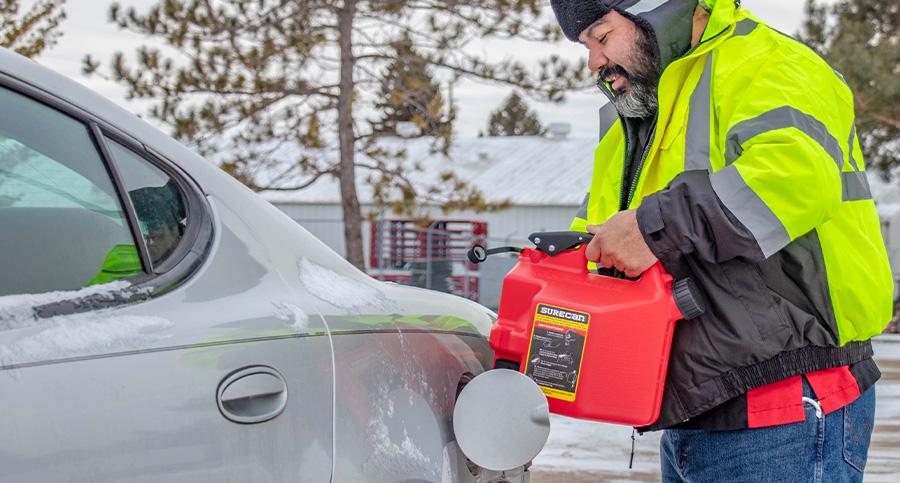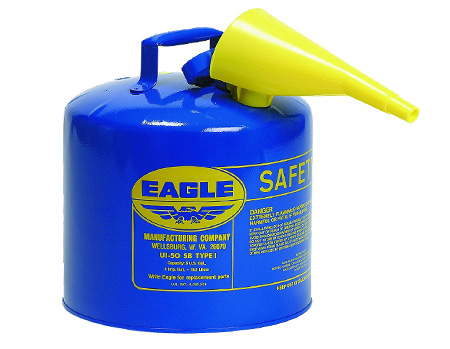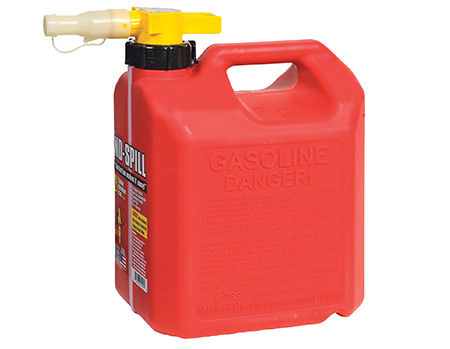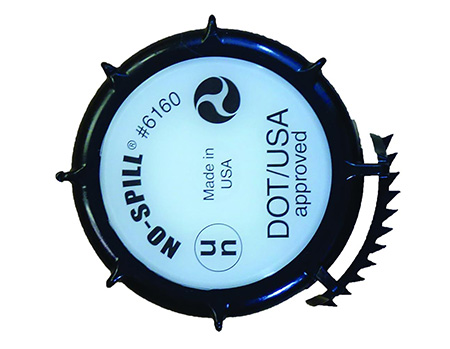by
Austin Richards
| Jan 23, 2019

You’ve all experienced road service calls where someone simply runs out of gas. The solution seems as simple as filling and pouring using a gas can, right? Well, maybe not. The choice of which container used to bring fuel is actually not so simple.
There are three basic types of containers: Safety can, portable can and D.O.T. compliant can. Here’s the difference.
-
Safety Can: Safety cans are approved by a third party safety company such as UL or FM. Safety cans must meet certain requirements set by OSHA 29 CFR 1926.155(l).
-
They must be five gallons or less in size. They must have a flash-arresting screen, a spring-closing lid and spout cover. The design must safely relieve internal pressure when subject to fire exposure.
-
This type of can is required when used by any business or commercial enterprise for storing or transferring gasoline and other flammable liquids. These cans meet OSHA requirements and are available in steel or plastic. These cans be used to transfer or store gas and other flammable liquids.

Eagle Type I Red Safety Can
-
Portable Fuel Can: A portable fuel can is a container designed for use by consumers. These cans are used to receive, transport, store, and dispense gasoline, diesel fuel, or kerosene. Equipped with a spigot allows for no spilling and easy pouring.
-
Cans are color coded in red for gasoline, yellow for diesel or blue for kerosene. They are deemed to be portable fuel containers regardless of how they are labeled per EPA 40 CFR 59.680.
-
Portable fuel cans are designed with several features in mind. They help to control evaporative emissions and reduce spillage. These cans are often referred to as CARB (California Air Resource Board) compliant cans.
-
These models are also designed with child-resistant features to meet the Children’s Gasoline Burn Prevention Act. These cans may meet EPA requirements, but not OSHA or DOT requirements. These cans are generally made of plastic, but there are some metal cans on the market.

No-Spill CARB Gas
-
DOT Compliant Can: These cans need to meet the Performance Oriented Packaging requirements of the Federal Hazardous Materials Regulations. For instance, a standard safety can does not meet the requirements for transport. However, Safety Transport Cans have a spring loaded hold-down bracket for the lid to protect the spout.
-
Some portable fuel cans have DOT caps that replace the spout assembly during transport to make them compliant. Jerri cans with screw-in caps that replace the spout assembly can also meet DOT requirements. Only cans meeting DOT requirements can be used for transporting flammable liquids.

DOT Compliant Cap
Check the label or imprinting on your gas cans to see if they meet DOT requirements. You should look for a DOT approval stamp, or UN marking numbers like 1A1/T1.2/100.
The choice of which gas can you purchase depends on how the container will be used. Safety cans are great in maintenance shops or storage yards while DOT approved cans are best for road service vehicles See more Fuel Cans.
Before using any equipment described, be sure to read, understand and follow all manufacturers instructions and guidelines.